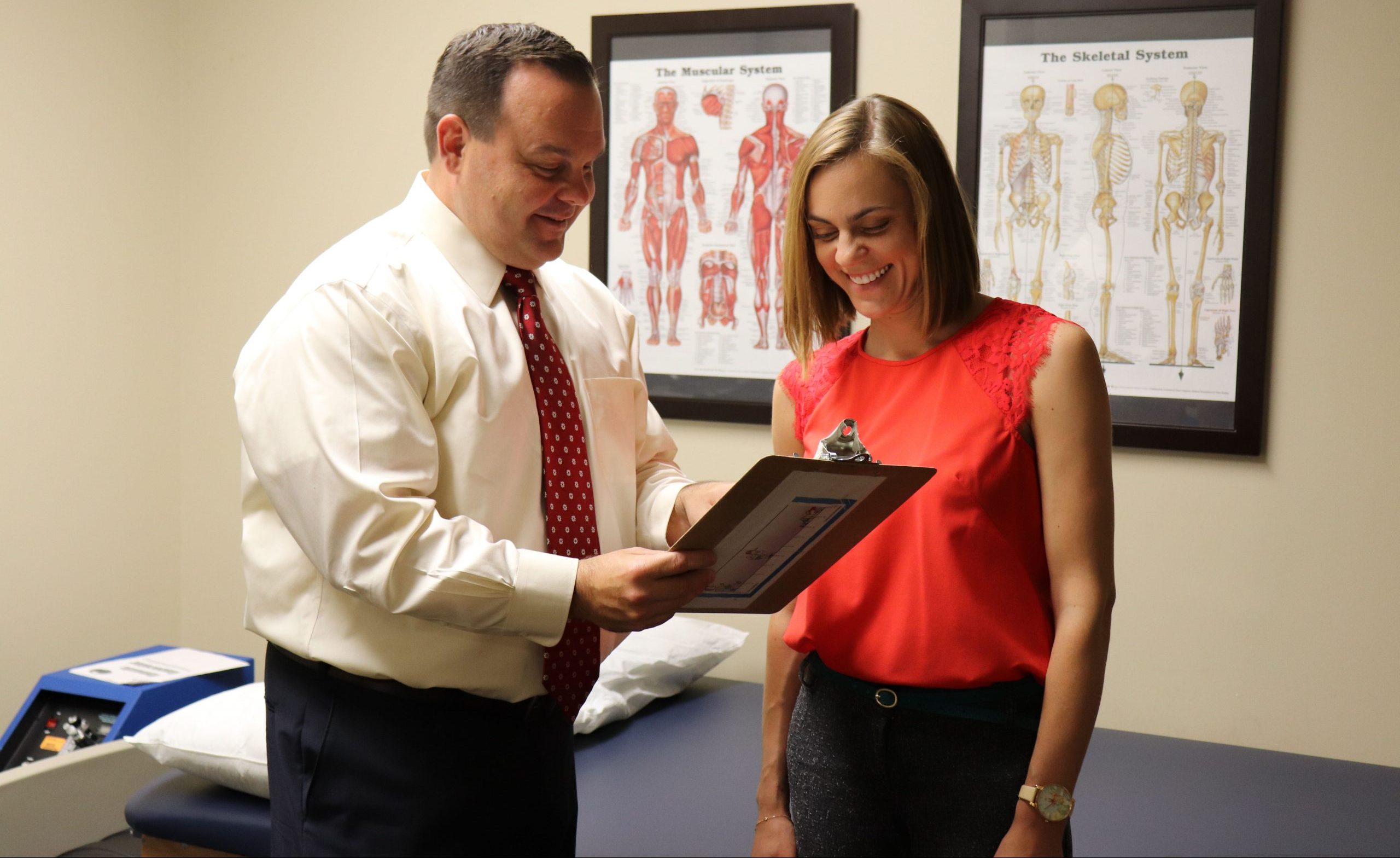Preventing Chronic Musculoskeletal Pain – A Patient-Centered Approach

Back to physical health resource hub
Musculoskeletal pain is one of the leading causes of disability in the US. It’s often caused by injury, such as a car accident or fall; by overuse, such as repetitive motions in a work setting; or simply by aging or through age-related diseases, like arthritis.
Jason Beneciuk, PT, DPT, PhD, MPH, is a clinical research scientist and the acting director of the Brooks/UF–PHHP Research Collaboration, which is the formal partnership between Brooks Rehabilitation in Jacksonville, Fla., and the College of Public Health & Health Professions at the University of Florida in Gainesville. One of Dr. Beneciuk’s main areas of interest is secondary prevention of musculoskeletal pain, especially in the low back. Specifically, he is interested in identifying factors that help explain – and therefore can help prevent – acute to chronic low back pain transition.
“A lot of the patients who are seen at Brooks, particularly in the outpatient settings, are receiving physical therapy for low back pain,” said Dr. Beneciuk. “The majority will improve following physical therapy and those tend to be the individuals at low risk for persistent pain. However, some studies indicate that up to 20-25 percent may be at high risk for poor outcomes six to 12 months later, which may lead to receiving treatment associated with higher risk for harm, for example surgery or opioids.”
Much of Dr. Beneciuk’s work falls into different areas relating to that 20-25 percent – identifying those patients; developing different strategies for treating their pain; and educating therapists on how to implement those strategies into clinical practice. What comes into focus is a psychologically informed, highly patient-centric approach to prevent the transition to chronic pain, which can include:
Utilizing validated patient questionnaires
Therapists can screen patients to gain insight about how psychological factors might influence how they think about and cope with their painful experiences – in addition to identifying patients that may be at higher risk for persistent pain. Questions focus on psychological constructs such as pain-related fear, pain catastrophizing, depressive symptoms and pain-related anxiety. Such questionnaires provide clinicians with valuable information that they can augment with other questionnaires or focused discussions.
One such questionnaire is the STarT Back screening tool, developed at Keele University (United Kingdom) by Jonathan Hill, PhD and colleagues. The STarT Back screening tool consists of nine questions that are used to risk-stratify patients into groups based on risk for developing persistent pain. “We previously looked to see how the STarT Back tool performs in outpatient physical therapy,” said Dr. Beneciuk. “It actually performed very well in predicting what patients were going to be like in terms of functional outcomes after physical therapy. So, we know it’s a strong prognostic tool. It’ll help clinicians identify where somebody is going to be toward the end of the episode of care.” Thanks to funding provided by the Foundation for Physical Therapy Research, Dr. Beneciuk and colleagues from the University of Southern California are currently testing a newly developed tool (STarT MSK Tool) to be used across a wide spectrum of musculoskeletal pain conditions.
Rethinking how the therapist communicates with patients
Traditionally, as trained clinicians, therapists often aim to identify tissue specific pain generators through physical examination and provide specific treatment to manage their findings. For those at high risk for persistent pain, however, that is not always the best course of action. “The patient really needs to be part of the process,” said Dr. Beneciuk. “So, we teach therapists how to efficiently implement different types of communication skills like motivational interviewing, where the patient is very much involved with the process, including setting goals. This is often challenging for clinicians because often we have and want to provide the answers. However, as a component of motivational interviewing, you need to put the ball in the patient’s court and let the patient self-reflect on their personal experiences.”
Tailoring treatment to align with patient needs
Instead of doing an exercise based on the patient’s current ability to perform the exercise, or whether it’s painful or not, the therapist might use the patient’s fear of participating in the activity as a guide. “Let’s say, for example, somebody has low back pain, and they’re fearful of doing movements that involve twisting the spine,” said Dr. Beneciuk. “Of course, we’re not going to have them go out and start golfing right away. Instead, we may introduce movements that involve rotation of the spine in a very graded and sometimes protective format, like starting on their back and rolling their knees from side to side. Most patients may not even realize they are moving their spine until we as physical therapists educate them on what they just achieved.”
In late 2019, Dr. Beneciuk’s research on predicting patients who are at risk for long-standing musculoskeletal pain won the Chattanooga Research Award from the American Physical Therapy Association (APTA). This award recognizes an author or team whose published work “demonstrates a significant contribution to physical therapy and presents a novel and innovative research study or theoretical model…”
“With the national crisis of opioid misuse and addictions, the ability to predict who will develop long-standing pain will allow for better, earlier use of non-pharmacological treatments, such as physical therapy,” said Dr. Beneciuk.
One of Dr. Beneciuk’s most recent grants came from Patient-Centered Outcomes Research Institute (PCORI), a national funding agency. The purpose of the project was to develop a stakeholder group of researchers, patients, and clinicians that, in collaboration, would help determine patient-centered research priorities. Patient-partner Dorothy Verstandig, a key stakeholder on the project, believes in the importance of considering the patient perspective in order to maximize treatment potential.
“Patient-centered research will provide raw data for providers that will enable them to see how patients feel when they are presented with a choice of treatment plans and programs,” said Verstandig. “Being part of the solution is so much better than being a forgotten bystander while providers make up their minds about what should be done. Patients who are in pain will benefit when they are treated as part of the solution.”


